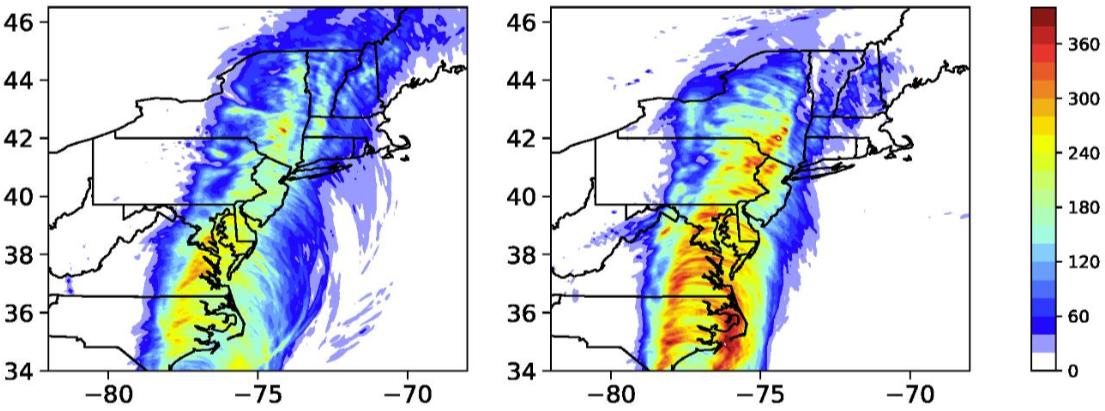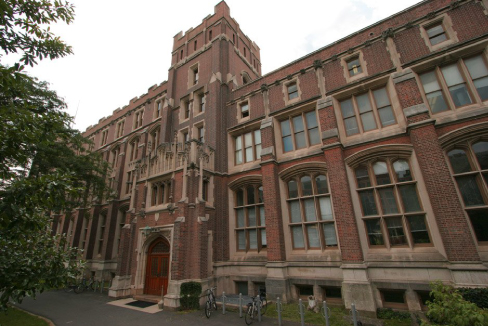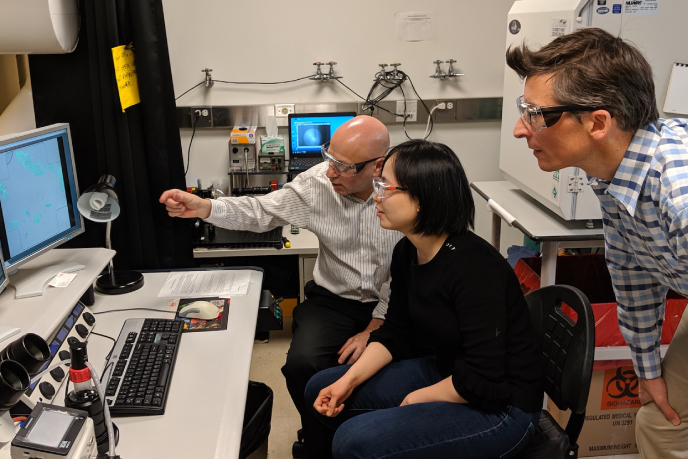Principal Investigator
At a Glance
The intensity of tropical cyclones is expected to increase as a consequence of global climate change. Over the past year, the Vecchi group has investigated how climate is impacting one of the main hazards of cyclones – increased rainfall. The Vecchi group suggests that increases in atmospheric moisture and storm intensity combine to enhance the response of cyclone rainfall to warming. They are also investigating how volcanoes, specifically through sulfate injection into the stratosphere, impact cyclone activity and regional rainfall.
Research Highlight
Tropical cyclone rainfall is projected by high-resolution models to increase over the 21st century at a rate outpacing the thermodynamic expectation of 7.5% per degree C warming (the “Clausius-Clapeyron Scaling”). This increase beyond thermodynamic expectation is due to a projected increase in tropical cyclone wind intensity (Liu et al. 2019). Indeed, once one accounts for the increasing proportion of intense tropical cyclones projected for the future, the tropical cyclone rainfall increases at the thermodynamically-predicted rate of 7.5% per degree C of warming. A detailed analysis of climate change for a landfalling hurricane (Liu et al. 2020) found the response of tropical cyclone and extratropical cyclone rainfall to warming was different in character, with the extratropical phase of a storm moistening more broadly (Figure 6.1). Ng and Vecchi (2020, in press) argue that rapid intensification (RI), the phenomenon whereby a cyclone intensifies over a short period of time, is reliant upon large-scale environmental conditions, such as atmospheric warming. This observation will serve as a basis for projecting RI probability from a large suite of climate models.
Volcanic forcing impacts global-scale tropical cyclones and hydroclimate variations (Yang et al. 2019; Jacobson et al. 2020, submitted). These impacts, however, depend fundamentally on the hemisphere in which the volcanic plume is most pronounced. Pinatubo (1991), the most intense volcanic eruption in the 20th century with a stratospheric plume symmetric about the equator, produced relatively modest impacts on cyclones and rainfall. By comparison, the weaker, but asymmetric, eruptions of Santa María (1902) and Agung (1963) shifted rainfall and tropical cyclone activity away from the hemisphere of strongest stratospheric aerosol forcing. Northern hemisphere volcanoes lead to a drying of semi-arid regions in West Africa (“the Sahel”) and hurricanes decrease. Southern hemisphere volcanoes, by contrast, do the opposite.

Projected climate changes over the present century would have dramatically increased the rainfall from Hurricane Irene (2011). Left: Rainfall simulated for Hurricane Irene (2011), which led to devastating rain-fed flooding of the Northeastern United States after it underwent “extratropical transition.” Right: simulated rainfall from Hurricane Irene under 21st century projected oceanic and atmospheric warming –increasing rainfall across Eastern United States. From Liu et al. (2020).
Volcanoes are thought to be the main drivers of climate change over the past millennium. They provide case studies to explore the response of the global climate system to radiative forcing. Recent work by the Vecchi group indicates that the best-studied volcano on record (Pinatubo) may be relatively unrepresentative of volcanic impact on climate in general, since most volcanoes appear to have primarily asymmetric forcing.
References
Jacobson, T., W. Yang, L. Horowitz and G.A. Vecchi, 2020. Impact of inter-hemispherically asymmetric volcanic aerosol forcing on Sahelian rainfall. Clim. Dyn. (submitted).
Liu, M., G.A. Vecchi, J. Smith and T. Knutson, 2019. Storm intensification and increased water vapor explain the super-Clausius-Clapeyron increase of tropical cyclone rainfall under global warming. Npj Climate and Atmospheric Science. doi:10.1038/s41612-019-0095-3.
Liu, M., L. Yang, J.A. Smith and G.A. Vecchi, 2020. Projected change of extreme rainfall of landfalling tropical cyclones undergoing extratropical transition: Hurricane Irene (2011). Earth’s Future, doi:10.1029/2019EF001360.
Ng, C.H.J., and G.A. Vecchi, 2020. Large-scale environmental controls on the seasonal statistics of rapidly intensifying North Atlantic tropical cyclones. Clim. Dyn. (in press).
Yang, W., G.A. Vecchi, S. Fueglistaler, L.W. Horowitz, D.J. Luet, A.G. Muñoz, D. Paynter, and S. Underwood, 2019. Climatic impacts from asymmetric large volcanic eruptions in a TC-Permitting climate model. Geophys. Res. Lett., doi:10.1029/2019GL082367.




